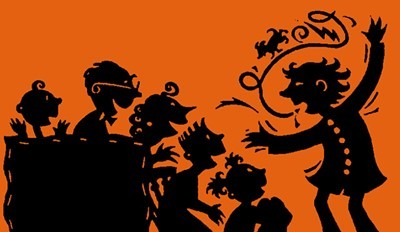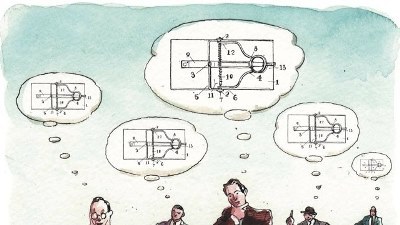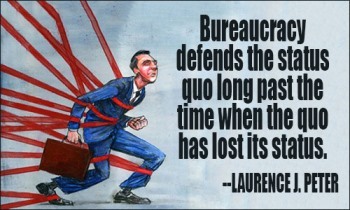Jeremie Averous's Blog, page 46
March 21, 2019
How to Deal With Different Storytelling Approaches
Following up on our post ‘How We Believe The First Explanation We Hear‘ I like this post of Valeria Maltoni ‘We Have two General Models of Storytelling. One is Ancient. One is New. It is Only a Matter of Time Before they Collide‘. Storytelling is how we develop our view of the world. The article is meaningful because it adds a dimension between the subjective, relational storytelling and the new storytelling generated automatically from computer-based knowledge.

There would be two different kind of storytelling:
anecdotal storytelling, passed between individuals and based on a low level of information – local and variable,the statistical storytelling, produced by new technology based on global information and data – global and standard.
Quoting from Christopher G. Moore: “We have a generation who are getting their stories from the global library, and the international group of story-tellers are transmitting stories that may conflict or contradict what they learned at home or school. As storytellers compete for the attention of an expanded global audience, the stories essential to sustain local cultures are threatened. Stories that inspire are no longer exclusively based on local elites, celebrities or events. […] The statistical story has disrupted and threatens to displace the anecdote.”
Valeria Maltoni makes a powerful point by contradicting this statement: “we have a hard time shedding the subjective story. Because it feels more real […] The reason why we feel more connected to a subjective story is that it influences our emotions. The statistical story keeps changing based on updates and fixes. We have a hard time connecting to that. But the statistical story can make us more efficient, improve our decisions.“
In any case, the conflict between statistical story and a more subjective, emotional one is I believe an essential conflict for all of us today. Let’s be more conscious of it.

March 19, 2019
How We Believe The First Explanation We Hear
I did not realize it so forcefully, and I have been impressed since I became conscious of the effect. Whatever first explanation on some event or phenomenon we hear we tend to believe, until some more persuasive explanation is forced upon us – and we have a tough time to change our beliefs then. There is an incredible power in the first convincing explanation we receive.
 Something many believed not so long ago: flat earth
Something many believed not so long ago: flat earthThis may explain for example, why it may be difficult to change our mind from explanations provided by our parents or social entourage when we were young, or from explanations provided by our cultural environment. It takes being exposed to obvious observations that the initial explanation is not sufficient or inaccurate to change our mind.
This effect has of course serious impact in our daily life: there is a premium to the first explanation we hear. If it is fake, unscientific or an attempt at manipulation does not matter – if it’s credible, we will take it for granted until a better explanation is imposed upon us. This explains in part the power of fake news and social media, and conversely the importance of subscribing to reliable information sources.
Being better conscious of this ‘first explanation effect’ is also useful to be less reluctant to change our view when we are offered more credible alternative explanations. Be more aware!

March 16, 2019
How Simultaneous Invention Shows that Progress is Inevitable
There seem to be an increasing awareness that simultaneous invention is more the rule than the exception. This means that when society reaches a certain stage of technological development, certain inventions become inevitable – and this tends to happen more and more often. This excellent Quartz post ‘Simultaneous invention’ summarizes this awareness, that can be complemented by Malcolm Gladwell’s article in the New Yorker ‘In the Air’.

“The whole history of inventions is one endless chain of parallel instances. There may be those who see in these pulsing events only a meaningless play of capricious fortuitousness; but there will be others to whom they reveal a glimpse of a great and inspiring inevitability which rises as far above the accidents of personality.” It would be the availability of scientific knowledge, and its continuous increase, that would create this inevitability.
We need to accept that invention results from building on others’ ideas and findings, and that as more and more people devote time and effort to invention, more and more inventions will be simultaneous in several places and contexts.
Of course, as the Quartz article remarks, this creates an increasing issue with the concept of Intellectual Property – why give the benefit of temporary monopoly to the first that publishes? Isn’t that rather detrimental to society and not as beneficial as conventional theory exposes (the benefit being the publication of the patent)?
Those questions are at the core of the future of Intellectual Property law and should not be underestimated.

March 14, 2019
How Bounding Back is More Important than Failing
I like this quote: “It is not how far you fall, but how high you bounce, that counts“. Attribution is controversial, but it remains quite relevant.
 Increasingly I find that the behavior in front of adversity is what counts. It is all too easy to appear to do the right thing when events and luck provide success. And sometimes it is just luck but we still believe it is our skills.
Increasingly I find that the behavior in front of adversity is what counts. It is all too easy to appear to do the right thing when events and luck provide success. And sometimes it is just luck but we still believe it is our skills.
Being able to recover from failure in a constructive way and fight back is what really makes the difference. And sometimes it is better to hire people who have struggled and maybe even failed, because it is far more instructive on ourselves and on how to do things right than just to coast through success.
I am not saying we should intend to fail, but that what’s really makes the difference is how we react in front of adversity.

March 12, 2019
How Social Media are Perfect Tools for Autocrats
Following up from the previous post ‘How BUMMER Became a New Acronym for Social Media‘, there is some debate about the social destruction brought about by Facebook and the likes, and whether those applications do not undermine democracy – such as in this article in the New York Review of Books titled ‘The Autocracy App‘.
 The article states in summary that:
The article states in summary that:
Facebook as a company has lot control of the consequences of the usage of its services, that are being used by pressure groups and rogue users to create instability, chaos and even ethnic cleansing
There is a growing consensus that the power of such a dominating company needs checking, as the tools proves to be much more useful to autocrats while it undermines democracy. Addiction and closure of the horizon of people around their interests hurts the debate, while data can be used by autocrats against users.
There are several ways to deal with the situation, from an user movement (promoted by Jaron Lanier) to anti-trust regulation. However for the moment the current frameworks seem to have difficulties to be effective.
As any tool that becomes prevalent, Facebook demonstrates shortcomings in parallel to benefits. The fact that there is no real governance of the company with Mark Zuckerberg keeping the control does not help. I really believe that regulation is the only way, and there have been positive effects of european law on social media. This needs to be reinforced, because it is true that the impact of social media changes our world, and that democracy is impacted.

March 9, 2019
How BUMMER Became a New Acronym for Social Media
Jaron Lanier – quite an interesting individual – came up with a new acronym for social media: BUMMER, which means ‘Behaviors of Users Modified and Made into Empires for Rent’. The concept is developed in this interesting (and critical) Medium article ‘Jaron Lanier’s Top 10 List for Quitting Social Media‘.
 The concept is that social media sites change our behaviors in a way that is of interest to them, and that their interest is straight financial. The two steps of this approach can be analysed.
The concept is that social media sites change our behaviors in a way that is of interest to them, and that their interest is straight financial. The two steps of this approach can be analysed.
Social media does change our behavior, that’s clear: most people just can’t stop looking at their mobile phone, and on the social networks on their mobile phones, and everything is engineering to support that behavior (notifications etc.).
Whether the interest of social media moguls is only financial is more open to debate. It might not have been the initial intention. It may only be a means to another objective. What this objective could be, oscillates between scary (manipulation of the masses) or benevolent (connection people).
I do not believe we should leave social media, because used well, like any tool, it can bring many benefits. But we must develop behavior rules so as not to fall prey to it. And the question is still open about what is really the objective of social media companies.

March 7, 2019
How to Deal With Loneliness
I like this post by Om Swami on loneliness. “It’s a blessing if you can harness it and be inspired while reveling in it. If not, it is the root cause of persistent restlessness and emptiness.” In this post he quotes Matt Haig and some of this quote resonates.
 Loneliness happens to most of us, at times. And it happens even though in our world we may have the feeling that it should happen less often thanks to the connections and constant opportunities for connection and entertainment. “In theory, it has never been easier to not be lonely. There is always someone we can talk to online. If we are away from loved ones then we can Skype them. But loneliness is a feeling as much as anything.”
Loneliness happens to most of us, at times. And it happens even though in our world we may have the feeling that it should happen less often thanks to the connections and constant opportunities for connection and entertainment. “In theory, it has never been easier to not be lonely. There is always someone we can talk to online. If we are away from loved ones then we can Skype them. But loneliness is a feeling as much as anything.”
How can we deal with loneliness? “I think the American writer Edith Wharton was the wisest person ever on loneliness. She believed the cure for it wasn’t always to have company, but to find a way to be happy with your own company. Not to be antisocial, but not be scared of your own unaccompanied presence.”
So, find a way to be happy with your own company!

March 5, 2019
How Virtual Creatures Invade Our Connections and our World
Virtual creatures start to be everywhere in our environment: major instagram influencers are hired by leading brands that are in fact virtual, virtual news anchor presenters appear. Maybe your next connection on your preferred social network will be virtual? Tough times for starlets, like exposed in this post ‘Brands Are Creating Virtual Influencers, Which Could Make the Kardashians a Thing of the Past‘.
 Lilmiquela, a famous virtual Instagram influencer
Lilmiquela, a famous virtual Instagram influencerVirtual creatures may look safer and more docile: no risk of personal crisis and unprofessional behaviors outside the screen, and full control of the behavior on screen. They can be made as attractive as needed, and may be fully adapted to the audience – many of those virtual influencers are colored.
At the same time of course we’re losing a certain dose of humanity, making interactions with those influencers and brands even more… virtual and distant from our day-to-day life. Those won’t have the same day-to-day issues and challenges we face as humans. Also, their perfection will look even more unapproachable for us poor imperfect humans.
I believe this trend is here to stay and will even be enhanced further with AI bots coupled with virtual creatures. It will also be harder to distinguish those virtual connections. Another reason to stay grounded in our humanity and being less influenced by the perfect pictures we find of others on social networks!

March 2, 2019
How Levels of Authority Should Specify the Right Debate Forum on Decisions
Following up on our post about ‘How To Find the Right Balance for Bureaucracy‘, the issue of decision approval in organizations is always a critical one. The issue of Levels of Authority granted to individuals always revolves around pre- or post- control. What is important is that the smaller decisions are not impeded by delays and are in fact controlled post-decision; but that for important decisions, sufficient debate occurs prior to the decision.
 In fast growing organizations, levels of authority are always too low. It is often the same in organizations that are not used to running large projects when it comes to the level of authority of the project manager. Levels of Authority often need to be increased to minimise delays, and improve reactivity. However, for major decisions that can have a substantial impact on the organization’s performance, it remain legitimate to ensure that a proper debate occurs. And sometimes those decisions may look small but will have a high leverage on performance.
In fast growing organizations, levels of authority are always too low. It is often the same in organizations that are not used to running large projects when it comes to the level of authority of the project manager. Levels of Authority often need to be increased to minimise delays, and improve reactivity. However, for major decisions that can have a substantial impact on the organization’s performance, it remain legitimate to ensure that a proper debate occurs. And sometimes those decisions may look small but will have a high leverage on performance.
The way approvals happen in most companies however is that despite a proper system of levels of authority, debate do not happen prior to the decision. Decisions are limited to clicking on an approval button and often there is no context to the decision. The issue may also lie in improper levels of authority, and the important decision may be hidden in the midst of many less important ones.
Levels of authority should not only specify authority levels: they should also specify those decisions that require debate, and how this debate should be conducted.

February 28, 2019
How To Find the Right Balance for Bureaucracy
I am always astonished as how fast bureaucracy can develop in any organisation, i.e. activities being created that keep people busy with limited value created for the client. In this HBR article (in French) ‘Le coût de la bureaucratie‘ some measures of bureaucracy and of its costs are developed. At the same time, some bureaucracy, systems and standards is needed to keep large organizations going and remain effective as they scale. How can the right balance be found?
 Bureaucracy is measured by looking for example at the time it takes to get a given decision, and the HBR paper shows that it increases significantly with the size of the organization. This is obviously a problem. At the same time, some kind of control is required on decisions being taken, in particular when they can have a large leverage on the organization’s performance. Similarly, a minimum of internal coordination and systems are required when an organisation grows, to make work more effective; but they should not be too inflexible and unable to adapt to new circumstances.
Bureaucracy is measured by looking for example at the time it takes to get a given decision, and the HBR paper shows that it increases significantly with the size of the organization. This is obviously a problem. At the same time, some kind of control is required on decisions being taken, in particular when they can have a large leverage on the organization’s performance. Similarly, a minimum of internal coordination and systems are required when an organisation grows, to make work more effective; but they should not be too inflexible and unable to adapt to new circumstances.
There is a fine balance between not enough and too much bureaucracy. Those organisations that find the right balance are the most effective. The main issue, I find, is that principles of operation often become obsolete but remain in force in bureaucratic organizations. I believe that every few years, a hard look should be taken at how the organisation works, and an objective of replacing 30 to 40% of its operating principles should be sought.
Do you practice this periodic health check?




